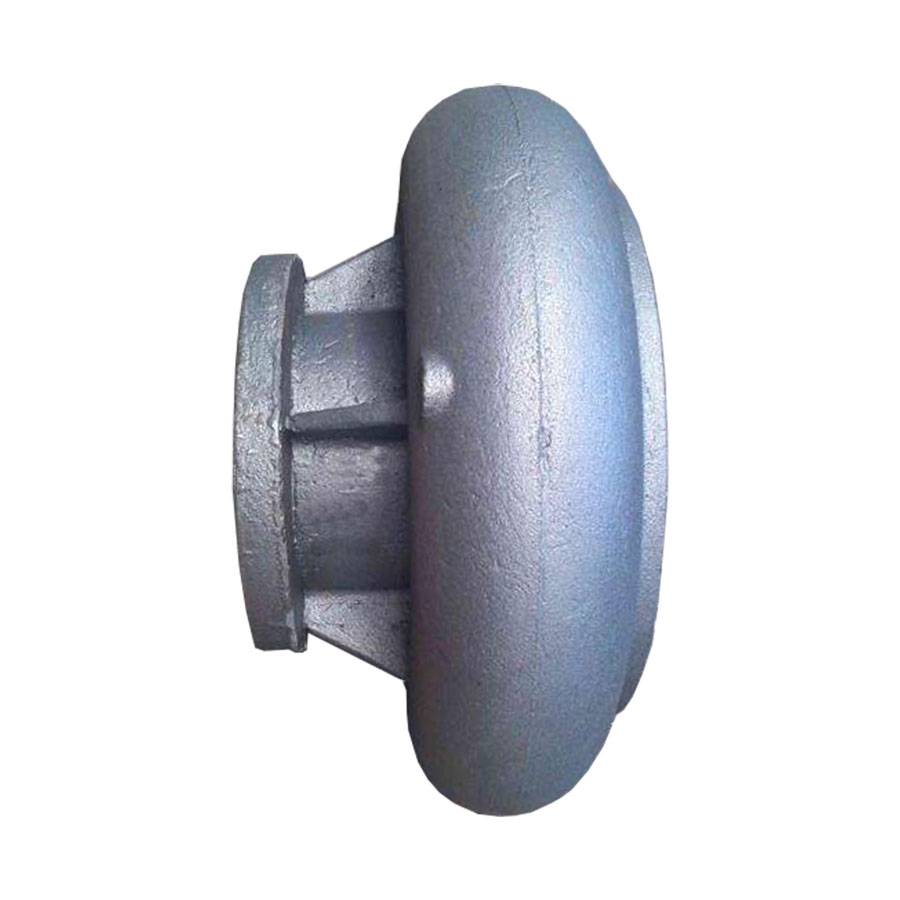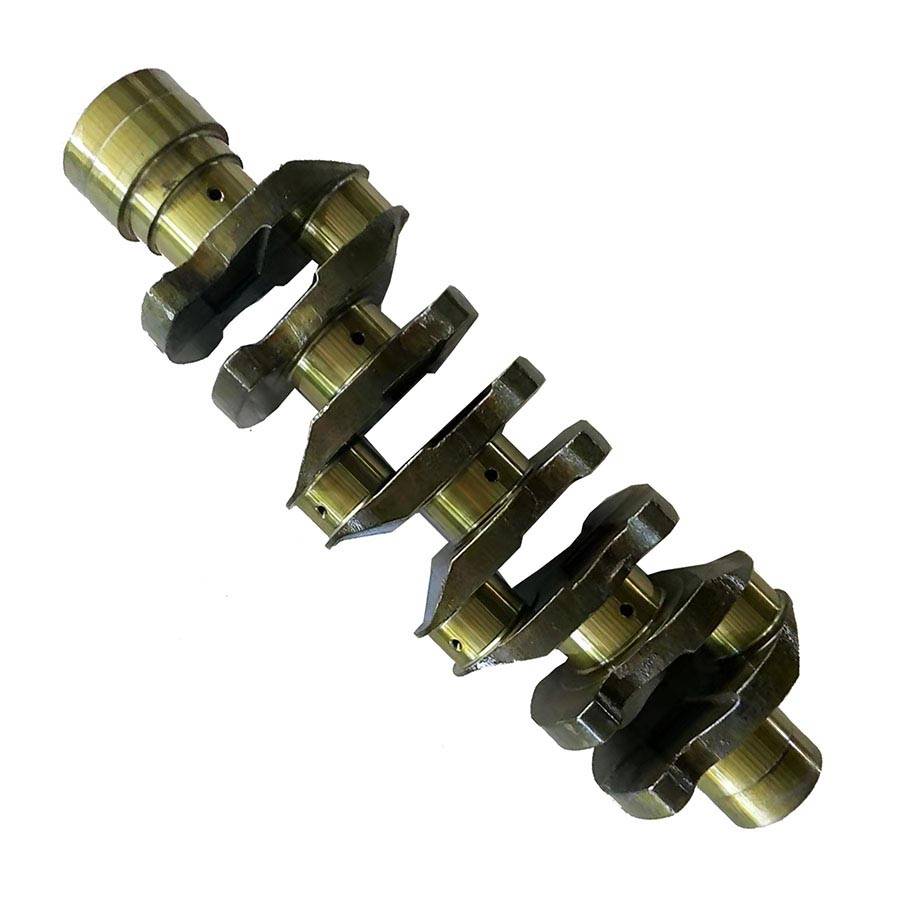Hot New Products Shell Mold Casting Supplier - Grey Cast Iron Pulley by Sand Casting – RMC Foundry Detail:
Custom grey cast iron shell mold castings with services of heat treatment and surface treatment.
Shell molding casting process is also called pre-coated resin sand casting process, hot shell molding castings or core casting process. The main molding material is the pre-coated phenolic resin sand, which is more expensive than green sand and furan resin sand. Moreover, this sand can not be recycle used.
Furan resin self-hardening sand casting process (nobake process) uses the furan resin coated sand to form the casting mold. After mixing the original sand (or reclaimed sand), liquid furan resin and liquid catalyst evenly, and filling them into the core box (or sand box), and then tighten it to harden into a mold or mold in the core box (or sand box) at room temperature. Then the casting mould or casting core were formed, which is called self-hardening cold-core box molding (core), or self-hardening method (core).
Because the mold is formed at room temperature and no need to heat, the self-hardening sand casting is also called no-bake casting process. The self-hardening method can be divided into acid-catalyzed furan resin and phenolic resin sand self-hardening method, urethane resin sand self-hardening method and phenolic monoester self-hardening method.
As a self-hardening cold box binder sand, furan resin sand is the earliest and currently most widely used synthetic binder sand in Chinese foundry. The amount of resin added in molding sand is generally 0.7% to 1.0%, and the amount of added resin in core sand is generally 0.9% to 1.1%. The content of free aldehyde in furan resin is below 0.3%, and some factories have dropped to below 0.1%. In the foundries in China, the furan resin self-hardening sand has reached the international level regardless of the production process and the surface quality of the castings.
Gray iron, or grey cast iron, is a type of cast iron that has a graphite microstructure. It is named after the gray color of the fracture it forms. The gray cast iron is used for housings where the stiffness of the component is more important than its tensile strength, such as internal combustion engine cylinder blocks, pump housings, valve bodies, electrical boxes, counter weights and decorative castings. Grey cast iron’s high thermal conductivity and specific head capacity are often exploited to make cast iron cookware and disc brake rotors.
A typical chemical composition to obtain a graphitic microstructure is 2.5 to 4.0% carbon and 1 to 3% silicon by weight. Graphite may occupy 6 to 10% of the volume of grey iron. Silicon is important to making grey iron as opposed to white cast iron, because silicon is a graphite stabilizing element in cast iron, which means it helps the alloy produce graphite instead of iron carbides; at 3% silicon almost no carbon is held in chemical combination with the iron.
The graphite takes on the shape of a three-dimensional flake. In two dimensions, as a polished surface will appear under a microscope, the graphite flakes appear as fine lines. The tips of the flakes act as preexisting notches; therefore, it is brittle. The presence of graphite flakes makes the Grey Iron easily machinable as they tend to crack easily across the graphite flakes. Grey iron also has very good damping capacity and hence it is mostly used as the base for machine tool mountings.
Mechanical Properties of Gray Cast Iron |
|||||||
| Item according to DIN EN 1561 | Measure | Unit | EN-GJL-150 | EN-GJL-200 | EN-GJL-250 | EN-GJL-300 | EN-GJL-350 |
| EN-JL 1020 | EN-JL 1030 | EN-JL 1040 | EN-JL 1050 | EN-JL 1060 | |||
| Tensile Strength | Rm | MPA | 150-250 | 200-300 | 250-350 | 300-400 | 350-450 |
| 0.1% Yield Strength | Rp0,1 | MPA | 98-165 | 130-195 | 165-228 | 195-260 | 228-285 |
| Elongation Strength | A | % | 0,3 – 0,8 | 0,3 – 0,8 | 0,3 – 0,8 | 0,3 – 0,8 | 0,3 – 0,8 |
| Compressive Strength | σdB | MPa | 600 | 720 | 840 | 960 | 1080 |
| 0,1% Compressive Strength | σd0,1 | MPa | 195 | 260 | 325 | 390 | 455 |
| Flexural Strength | σbB | MPa | 250 | 290 | 340 | 390 | 490 |
| Schuifspanning | σaB | MPa | 170 | 230 | 290 | 345 | 400 |
| Shear Stress | TtB | MPa | 170 | 230 | 290 | 345 | 400 |
| Modules of elasticity | E | GPa | 78 – 103 | 88 – 113 | 103 – 118 | 108 – 137 | 123 – 143 |
| Poisson number | v | – | 0,26 | 0,26 | 0,26 | 0,26 | 0,26 |
| Brinell hardness | HB | 160 – 190 | 180 – 220 | 190 – 230 | 200 – 240 | 210 – 250 | |
| Ductility | σbW | MPa | 70 | 90 | 120 | 140 | 145 |
| Tension and pressure change | σzdW | MPa | 40 | 50 | 60 | 75 | 85 |
| Breaking Strength | Klc | N/mm3/2 | 320 | 400 | 480 | 560 | 650 |
| Density | g/cm3 | 7,10 | 7,15 | 7,20 | 7,25 | 7,30 | |
Equivalent Grade of Grey Cast Iron |
||||||||
| AISI | W-stoff | DIN | BS | SS | AFNOR | U.N.E. / I.H.A. | JIS | UNI |
| A48-20B | 0.6010 | GG-10 | Grade 100 | 0110-00 | - | - | FC 100 | G 10 |
| A48-25B | 0.6015 | GG-15 | Grade 150 | 0115-00 | Ft 15 D | FG 15 | FC 150 | G 15 |
| A48-30B | 0.6020 | GG-20 | Grade 200 | 0120-00 | Ft 20 D | FG 20 | FC 200 | G 20 |
| A48-40B | 0.6025 | GG-25 | Grade 250 | 0125-00 | Ft 25 D | FG 25 | FC 250 | G 25 |
| A48-45B | 0.6030 | GG-30 | Grade 300 | 0130-00 | Ft 30 D | FG 30 | FC 300 | G 30 |
| A48-50B | 0.6035 | GG-35 | Grade 350 | 0135-00 | Ft 35 D | FG 35 | FC 350 | G 35 |
| A48-60B | 0.6040 | GG-40 | Grade 400 | 0140-00 | Ft 40 D | - | FC 40 | - |
| 32510 | GTS-35 | B340/12 | 0815-00 | MN 35-10 | - | FCMW 330 | - | |
| A220-40010 | 0.8145 | GTS-45 | P440/7 | 0852-00 | MN 450 | - | FCMP 440/490 | GMN 45 |
| A220-50005 | 0.8155 | GTS-55-04 | P510/4 | 0854-00 | MP 50-5 | - | FCMP 490 | GMN 55 |
| A220-70003 | 0.8165 | GTS-65-02 | P570/3 | 0856-00 | MN 650-3 | - | FCMP 590 | GMN 65 |
| A220-70003 | - | GTS-65 | P570/3 | 0858 | MN 60-3 | - | FCMP 540 | - |
| A220-80002 | 0.8170 | GTS-70-02 | P690/2 | 0862-00 | MN 700-2 | - | FCMP 690 | GMN 70 |
Resin Coated Sand Casting Metal and Alloys |
|
| Metal & Alloys | Popular Grade |
| Gray Cast Iron | GG10~GG40; GJL-100 ~ GJL-350; |
| Ductile (Nodular) Cast Iron | GGG40 ~ GGG80; GJS-400-18, GJS-40-15, GJS-450-10, GJS-500-7, GJS-600-3, GJS-700-2, GJS-800-2 |
| Austempered Ductile Iron (ADI) | EN-GJS-800-8, EN-GJS-1000-5, EN-GJS-1200-2 |
| Carbon Steel | C20, C25, C30, C45 |
| Alloy Steel | 20Mn, 45Mn, ZG20Cr, 40Cr, 20Mn5, 16CrMo4, 42CrMo, 40CrV, 20CrNiMo, GCr15, 9Mn2V |
| Stainless Steel | Ferritic Stainless Steel, Martensitic Stainless Steel, Austenitic Stainless Steel, Precipitation Hardening Stainless Steel, Duplex Stainless Steel |
| Aluminium Alloys | ASTM A356, ASTM A413, ASTM A360 |
| Brass / Copper-based Alloys | C21000, C23000, C27000, C34500, C37710, C86500, C87600, C87400, C87800, C52100, C51100 |
| Standard: ASTM, SAE, AISI, GOST, DIN, EN, ISO, and GB | |


Custom Cast Iron Casting Products

Ductile Iron Casting Products
Product detail pictures:



Related Product Guide:
We thinks what buyers think, the urgency of urgency to act during the interests of a purchaser position of theory, allowing for much better high-quality, reduced processing costs, charges are more reasonable, won the new and outdated consumers the support and affirmation for Hot New Products Shell Mold Casting Supplier - Grey Cast Iron Pulley by Sand Casting – RMC Foundry, The product will supply to all over the world, such as: Cairo , Lebanon , Norway , We have been sincerely looking forward to cooperate with customers all over the world. We believe we can satisfy you with our high-quality products and solutions and perfect service . We also warmly welcome customers to visit our company and purchase our products.
This company has the idea of "better quality, lower processing costs, prices are more reasonable", so they have competitive product quality and price, that's the main reason we chose to cooperate.
-
Ordinary Discount Metal Casting Foundry - Meta...
-
Ordinary Discount Ductile Iron Casting Supplier...
-
Reasonable price Ductile Iron Sand Casting Fact...
-
Factory Price For Bronze Gravity Casting - All...
-
Factory Outlets Stainless Steel Casting Foundry...
-
China Cheap price Shell Mold Casting Parts - A...









